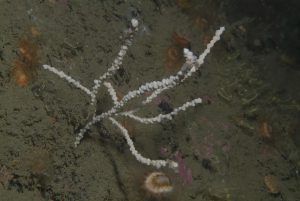Thank you!
The consultation on proposals to designate four new marine protected areas in Scottish seas is now closed. If you were one of the many thousands of people who signed the e-actions below, we’d just like to say THANK YOU!
Marine Conservation Society and Scottish Wildlife Trust
Whale and Dolphin Conservation
We will keep you posted of any updates regarding these possible MPAs. You can still see the Scottish Government’s public consultation information.
What is the Scottish Government proposing?
Four new marine protected areas in Scottish seas:
Northeast Lewis (Risso’s dolphin, sandeels, geological features)
Sea of the Hebrides (Basking shark, minke whale, fronts, geological features)
Shiant East Bank (circalittoral sands and mixed sediment communities, Northern sea fan and sponge communities, Shelf banks and mounds, geological features)
Southern Trench (burrowed mud, minke whale, fronts, shelf deeps, geological features)
Why are these new MPAs needed?
These new proposed sites are vital to fill ecological gaps in Scotland’s developing network of Marine Protected Areas. If well-managed, a stage that will come later, they can provide protection for species not currently represented in the network and some habitats that need additional sites. The mobile species in these proposals – basking shark, minke whale and Risso’s dolphin – are protected from harassment and killing by Scots, UK and European law already, but these MPAs can protect important areas and habitats that are crucial for feeding, breeding and long-term survival. Basking

Sandeel
shark populations in particular are still recovering from historic hunting, and minke whale and Risso’s dolphin are vulnerable to a number ofpressures. Sandeels are small fish that shelter within the sediment and provide a vital part of the ocean food chain, preyed upon by larger fish, mammals and birds. Declines in seabird populations have been linked to low sandeel numbers at the time of year when they are most needed for rearing chicks.
Some important seabed habitats are also proposed for protection within these MPAs. Sandy sediments are crucial for cod spawning, burrowed mud is home to the commercially important langoustine (Nephrops) and is a very effective carbon sink, and sea fan and sponge communities make complex structures that provide a home for many species. ‘Fronts’ form where different types of water meet and create areas of high productivity, which are important feeding areas for many species, particularly in the summer, and ensure nutrients are cycled through the ocean. Shiant East Bank’s Shelf banks and Mounds form an important habitat for many smaller invertebrates, such as shellfish and crustaceans, and are part of a highly dynamic environment.

Northern seafan. SNH.
What will happen next, if these MPAs are established?
These places will then be recognised as of national importance in law, but management measures will still be needed to ensure they are properly protected and well-managed. This means that a further process to assess and manage the impact of human activities that are a risk to the protected species and habitats (‘features’) will need to be undertaken. Management measures may apply to anything that physically disturbs the protected feature itself, or that has a negative impact on something needed for recovery or favourable conservation in these areas, such as a food source or essential habitat.
Read our running history of MPAs here.
